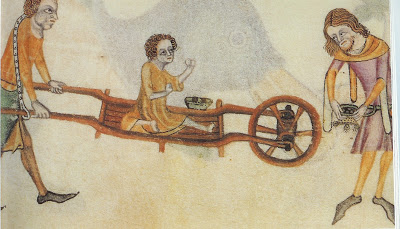From Marvels of Nature to Inmates of Asylums: Imaginations of Natural Folly
Ruth von Bernuth (Institut für deutsche Literatur Humboldt Universität zu Berlin)
Disability Studies Quarterly, Vol 26, No 2 (2006)
Abstract
In medieval and Renaissance times European courts kept fools, who were placed into one of two categories: artificial fools (or jesters) and natural fools. The present study examines natural fools. Extant studies generally treat natural fools as both mentally and physically ill and/or disabled. This study contributes to the discussion of natural folly by examining two sources about the Ernestinian Saxon court fool Claus Narr. According to the documents natural fools were seen as permanently mentally changed people and classified as so-called “wonder men.” Therefore they were kept and collected at courts. When permanent mental difference and psychiatric disease amalgamated at the beginning of the 18th century, however, the natural fool became an object of education and medicine. This paper argues that the changing meaning of the natural fool nevertheless retained components of its initial medieval conception.
In 1563 Archduke Ferdinand of Austria took over the castle of Ambras near Innsbruck (Austria) in order to live there with his commoner wife. He rebuilt the castle in a manner that allowed him to install his Chamber of Arts and Curiosities. When Johann Wolfgang von Goethe visited the castle more than two hundred years later he still believed to have seen the most exquisite examples of art and curiosities (Scheicher, 1977). Archduke Ferdinand and other noble and civil collectors of the 16th century were simply interested in anything or anyone potentially classifiable as a wonder. The relics that were believed to be wonder-working were, therefore, the nucleus of the Archduke’s collection. He later gathered other marvelous objects such as sharks’ teeth, whales’ ribs, precious stones, curiously shaped antlers, weapons, artificial machines and rare animals under the assumption that everything that was rare or even unique in the world should be regarded as a wonder of nature. The rarity of each item subsequently increased the value of the wonder.
From Marvels of Nature to Inmates of Asylums: Imaginations of Natural Folly
Ruth von Bernuth (Institut für deutsche Literatur Humboldt Universität zu Berlin)
Disability Studies Quarterly, Vol 26, No 2 (2006)
Abstract
In medieval and Renaissance times European courts kept fools, who were placed into one of two categories: artificial fools (or jesters) and natural fools. The present study examines natural fools. Extant studies generally treat natural fools as both mentally and physically ill and/or disabled. This study contributes to the discussion of natural folly by examining two sources about the Ernestinian Saxon court fool Claus Narr. According to the documents natural fools were seen as permanently mentally changed people and classified as so-called “wonder men.” Therefore they were kept and collected at courts. When permanent mental difference and psychiatric disease amalgamated at the beginning of the 18th century, however, the natural fool became an object of education and medicine. This paper argues that the changing meaning of the natural fool nevertheless retained components of its initial medieval conception.
In 1563 Archduke Ferdinand of Austria took over the castle of Ambras near Innsbruck (Austria) in order to live there with his commoner wife. He rebuilt the castle in a manner that allowed him to install his Chamber of Arts and Curiosities. When Johann Wolfgang von Goethe visited the castle more than two hundred years later he still believed to have seen the most exquisite examples of art and curiosities (Scheicher, 1977). Archduke Ferdinand and other noble and civil collectors of the 16th century were simply interested in anything or anyone potentially classifiable as a wonder. The relics that were believed to be wonder-working were, therefore, the nucleus of the Archduke’s collection. He later gathered other marvelous objects such as sharks’ teeth, whales’ ribs, precious stones, curiously shaped antlers, weapons, artificial machines and rare animals under the assumption that everything that was rare or even unique in the world should be regarded as a wonder of nature. The rarity of each item subsequently increased the value of the wonder.
Click here to read this article from Disability Studies Quarterly
Subscribe to Medievalverse
Related Posts